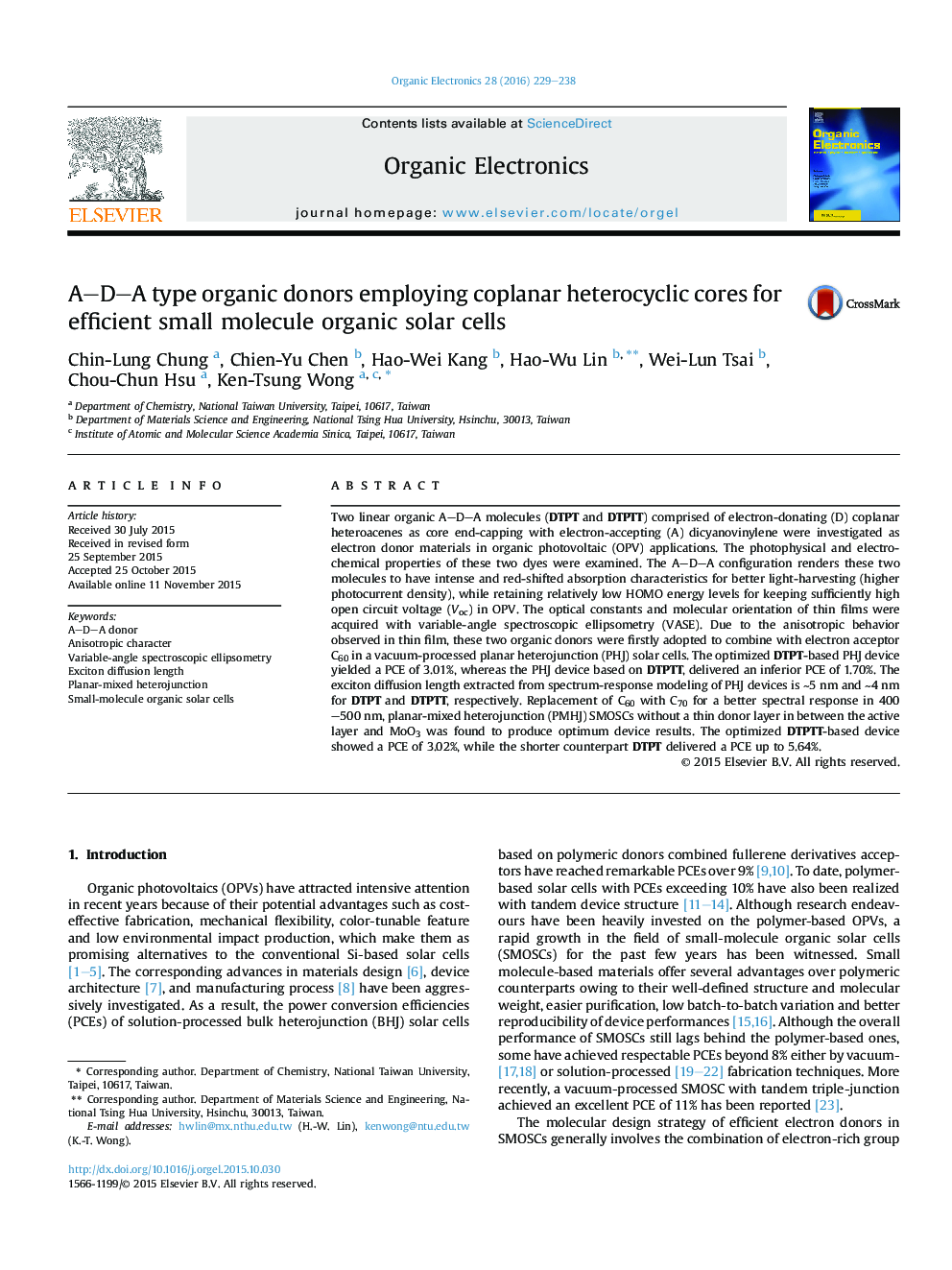| کد مقاله | کد نشریه | سال انتشار | مقاله انگلیسی | نسخه تمام متن |
|---|---|---|---|---|
| 1267138 | 1496829 | 2016 | 10 صفحه PDF | دانلود رایگان |
• Two A–D–A molecules employing rigid S,N-heteroacenes as D core were synthesized.
• The films of these dyes show uniaxial anisotropic feature and high absorptivity.
• The exciton diffusion length of DTPT and DTPTT is ~5 nm and ~4 nm, respectively.
• With C70 as acceptor, the DTPT-based PMHJ solar cell delivers a PCE up to 5.64%.
Two linear organic A–D–A molecules (DTPT and DTPTT) comprised of electron-donating (D) coplanar heteroacenes as core end-capping with electron-accepting (A) dicyanovinylene were investigated as electron donor materials in organic photovoltaic (OPV) applications. The photophysical and electrochemical properties of these two dyes were examined. The A–D–A configuration renders these two molecules to have intense and red-shifted absorption characteristics for better light-harvesting (higher photocurrent density), while retaining relatively low HOMO energy levels for keeping sufficiently high open circuit voltage (Voc) in OPV. The optical constants and molecular orientation of thin films were acquired with variable-angle spectroscopic ellipsometry (VASE). Due to the anisotropic behavior observed in thin film, these two organic donors were firstly adopted to combine with electron acceptor C60 in a vacuum-processed planar heterojunction (PHJ) solar cells. The optimized DTPT-based PHJ device yielded a PCE of 3.01%, whereas the PHJ device based on DTPTT, delivered an inferior PCE of 1.70%. The exciton diffusion length extracted from spectrum-response modeling of PHJ devices is ∼5 nm and ∼4 nm for DTPT and DTPTT, respectively. Replacement of C60 with C70 for a better spectral response in 400–500 nm, planar-mixed heterojunction (PMHJ) SMOSCs without a thin donor layer in between the active layer and MoO3 was found to produce optimum device results. The optimized DTPTT-based device showed a PCE of 3.02%, while the shorter counterpart DTPT delivered a PCE up to 5.64%.
Figure optionsDownload as PowerPoint slide
Journal: Organic Electronics - Volume 28, January 2016, Pages 229–238
